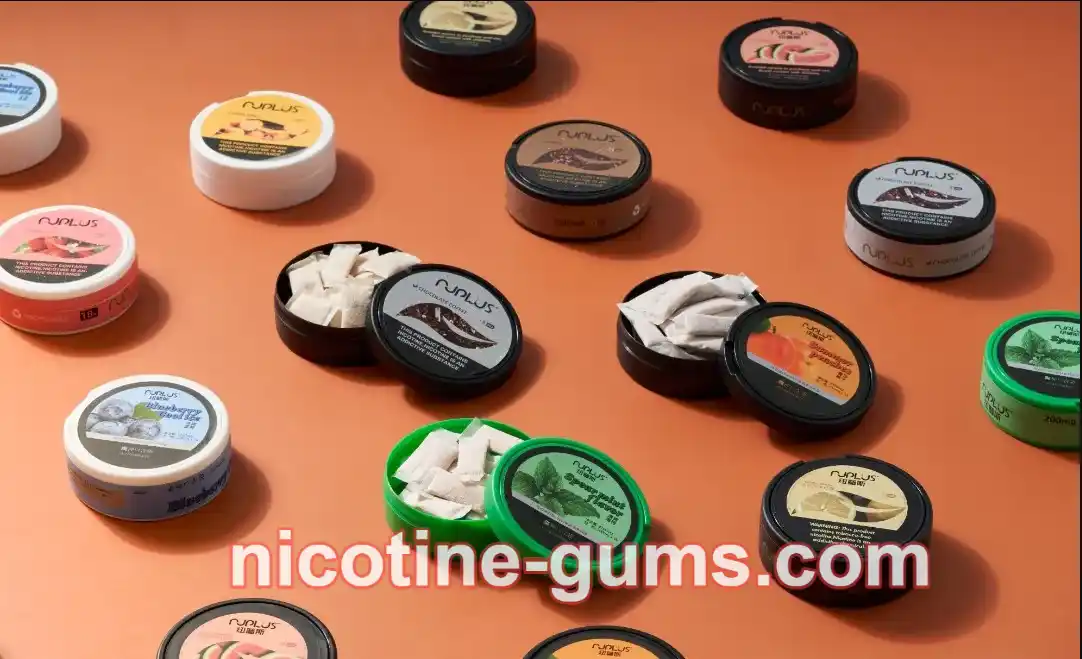The Rise of Nicotine Pouches: The New Frontier in Tobacco
Over the past couple of years, nicotine pouches have emerged as a powerful contender in the world of tobacco alternatives. What makes them so popular? Let’s dive in and uncover the growing appeal of these sleek, flavorful pouches and why they're gaining momentum as a go-to choice for consumers looking for a discreet, convenient way to get their nicotine fix.
The Nicotine Pouch Revolution: Tiny Yet Mighty
Nicotine pouches are small, discreet, and packed with nicotine, offering a more convenient and cleaner alternative to traditional tobacco products like cigarettes or vapes. Made from plant-based fibers infused with nicotine and a variety of flavors, these pouches are about the size of a thumbnail, making them portable and easy to use without the need for lighting up or inhaling vapor. Unlike Swedish snus—which contains tobacco—nicotine pouches don’t use tobacco leaves or tobacco-derived products. This gives them a cleaner, more advanced feel for users who want to avoid the messiness of traditional smokeless tobacco.
While nicotine pouches are often confused with snus, they are in fact a newer, more hygienic iteration. Instead of snuffing tobacco, users simply place a small pouch under their lip, where it releases nicotine steadily without the hassle or odor of cigarettes or vapes. This has made nicotine pouches a favorite among people who want to get their nicotine hit without drawing attention, especially in environments like offices or public spaces where smoking is frowned upon.
Why Are Nicotine Pouches So Popular?
Several factors contribute to the skyrocketing popularity of nicotine pouches. For one, convenience is key. These pouches are incredibly easy to use and can be slipped into your mouth without creating a mess. There’s no smoke, no vapor, and no lingering smell—just a quick and easy way to get your nicotine fix. This is especially important for people who want to avoid the stigma that comes with smoking or vaping.
Secondly, the flavor options are a major draw. Nicotine pouches come in a wide array of flavors, including mint, citrus, berry, and even coffee. For consumers who miss the variety that flavored vapes used to offer, nicotine pouches provide an enticing alternative, especially in countries where flavored vapes have been banned due to increasing concerns about youth addiction. These flavorful options allow users to indulge in a little taste experience while satisfying their nicotine cravings.
Another selling point is their role as a smoking cessation tool. Many users turn to nicotine pouches as a less harmful alternative to cigarettes, using them to help wean off smoking. While they still deliver nicotine, they avoid the tar and harmful chemicals found in traditional cigarettes, making them a potential harm-reduction strategy for those trying to quit.
The Numbers Don’t Lie: A Market in Explosive Growth
The numbers surrounding nicotine pouches are nothing short of impressive. In 2023, the global nicotine pouch market was valued at $2.77 billion. Experts predict that by 2030, this figure will skyrocket to $23.6 billion—a growth rate of nearly 36% from 2024 to 2030. This growth has been fueled by an increase in consumer demand, especially in markets like the U.S., where the use of smokeless tobacco products has deep roots.
The market’s explosive expansion is clear when you look at sales figures. Global sales of nicotine pouches grew from 17.09 billion units in 2022 to 20.77 billion units in 2023. The U.S. accounted for a huge chunk of that, with an estimated 14.97 billion pouches sold in 2023, up from 12.61 billion in 2022. Sweden came in second, with 2.2 billion pouches sold in 2023, and Denmark was third, with 745 million units sold.
A Competitive U.S. Market: Entering the Nicotine Pouch Battle
In the U.S., the competition in the nicotine pouch market is heating up. With a long-standing tradition of smokeless tobacco use (think chewing tobacco), the market is primed for these new products. The FDA’s regulatory framework has also provided a stable environment for the growth of nicotine pouches, although it has meant that companies must tread carefully when marketing their products.
In 2023, the retail value of nicotine pouches in the U.S. was an impressive $8.58 billion, up from $7.23 billion the previous year. Industry experts predict that by 2027, the modern oral nicotine market in the U.S. could reach $11.03 billion. One brand that has emerged as a dominant player is Zyn, which is owned by Philip Morris International following their $16 billion acquisition of Swedish Match in 2022. Zyn has quickly become the leader in the American market, and its popularity continues to rise, particularly among younger consumers.
Zyn’s success can be attributed to a few factors. First, it’s priced lower than traditional cigarettes—at around $5 per can versus $8 for a pack of cigarettes. This price advantage, combined with the product’s convenience and variety of flavors, has made it particularly attractive to Gen Z, who may be less inclined to pick up a pack of cigarettes but still seek a nicotine fix. In the third quarter of 2023, Zyn’s shipment volumes reached 104.5 million cans, a 65.7% increase from the previous year.
Zyn’s growth comes at the expense of other brands. On!, owned by Altria, ranked second in sales in 2022, with 15.4 million cans sold. Meanwhile, Rogue, a brand under the Swiss International Group, secured third place with 7.9 million cans sold. But even with these established players, there’s still plenty of room for new entrants in the market.
The Global Expansion: New Markets, New Opportunities
While nicotine pouches have gained significant traction in established markets like the U.S. and Sweden, there’s a growing appetite for these products in other regions. In particular, markets in Asia and Eastern Europe are seeing a surge in demand. For example, Poland experienced a massive 69.5% increase in nicotine pouch sales in 2023, and the Czech Republic has also been a strong market for these products.
One country that stands out in terms of growth is Pakistan, where nicotine pouch usage jumped by an impressive 70.7% in 2023. With over 10 million users in the country, nicotine pouches are quickly becoming a staple of the Pakistani market. In 2022, British American Tobacco (BAT) reported that its modern oral nicotine brand Velo had sold over 40 million cans per month in Pakistan. With this kind of growth, it’s no surprise that Pakistan has become BAT’s third-largest market for nicotine pouches.
Challenges and Regulatory Hurdles
Despite their rapid growth, nicotine pouches still face regulatory challenges in many countries. Regulations vary widely, with some countries treating them as tobacco products, others as consumer goods, and still others placing them under specific nicotine or pharmaceutical regulations.
For example, in the U.K., nicotine pouches are classified under general consumer product safety regulations, rather than tobacco laws. This regulatory approach has allowed nicotine pouches to thrive, as they are not subject to the same restrictions as traditional tobacco products. However, in other countries, such as France, nicotine is considered a toxic substance and is heavily regulated.
In Germany, nicotine pouches fall into a regulatory gray area. They are neither regulated as tobacco nor as food products, meaning they cannot be legally sold. Meanwhile, Belgium and the Netherlands have both enacted bans on nicotine pouches, citing concerns about youth access and potential addiction. Australia and New Zealand have followed suit with strict regulations, making nicotine pouches available only with a prescription.
The variation in regulations across regions presents both challenges and opportunities for manufacturers. As demand grows, so too does the pressure for regulatory bodies to figure out how best to balance consumer safety with market innovation.
Looking Ahead: A Bright Future for Nicotine Pouches?
Despite the challenges, the future of nicotine pouches looks promising. While they currently make up only a small portion of the global nicotine market—around 2% in 2022—this category is still in its infancy. As more consumers experiment with these products and more brands enter the market, the potential for growth is huge.
However, as the market expands, so does the scrutiny from regulators. Governments are faced with the difficult task of balancing the potential harm reduction benefits of nicotine pouches with concerns about youth addiction, accessibility, and safety. A clear, evidence-based regulatory framework will be crucial in determining how this product category evolves.
Rather than relying on blanket bans, which history shows rarely achieve their intended goals, a more measured approach might be necessary. After all, the demand for these products is real, and finding a way to regulate them responsibly could help meet consumers’ needs while minimizing potential harms.
In the coming years, nicotine pouches could very well become the mainstream alternative for people looking to satisfy their nicotine cravings without the harmful side effects of traditional smoking. For now, it’s a race to see who can capture the lion's share of this exciting, fast-growing market.
